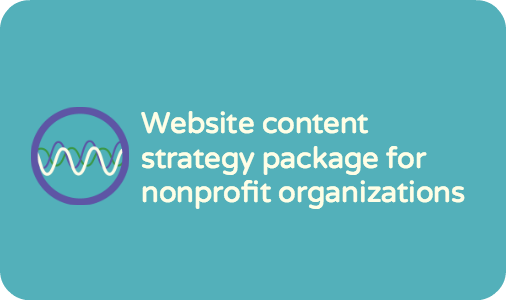In part one of our interview Bianca Freedman of the Credit Valley Hospital Foundation shared her thoughts on and experiences with the importance of social media planning – and the dangers of operating without a plan. In part two, Bianca shares additional insights on creating a plan, setting goals and objectives and measuring success.
Where do you start with social media planning?
Start “big picture” and do the tactics last. As marketers/communicators, we can sometimes get amped on the creative ideas and skip to tactics. It’s important to start with your overall vision and goals for social media and your organization.
Brainstorm big time. Have a great conversation to get you started. Include multiple voices, both inside and outside of your communications or marketing department. Why not include a nurse if you work at a hospital or a major gift officer from your fundraising team? Donors can also offer valuable insight.
Ask them if and how they would like to participate in social media activities for your organization. Find out how social media marketing could assist your colleagues in their portfolios. A great conversation will help you to generate ideas and gauge interest from key stakeholders. It is also likely to help you to identify worthwhile goals.
Goals, Objectives, Strategy: Ask yourself what you want to achieve and how you are going to get there. Your objectives should follow the S.M.A.R.T principle: Specific, Measurable, Attainable, Realistic, Timely. Build in benchmarks and methods of measurement to be able to evaluate your success as you go.
One important thing to remember is that nothing is set in stone; your social media plan is a living, breathing document. It will change as you execute the plan and reveal what works best for your organization.
Tactics: Plan your social media activities on a realistic timeframe. Your tactics will include all of the fun, creative ideas you have come up with. Think about content generation, content posting and content promotion. If you write great content, share it and cross promote it – you’re in business.
How did you establish your goals and objectives? How should other nonprofits do this?
Discussion. For us at Credit Valley, the goals and objectives of social media came out of great discussion. By engaging a handful of key stakeholders (including staff outside of communications) in conversation, we were able to look at what our traditional forms of marketing/communications are achieving now and what could be improved with a more social web presence.
Start with the overall goal. We determined that what we really wanted out of social media was to cultivate fundraisers… not just donors. This became our overall goal. We determined that many of our communications tools are one-way. Social media presented us with an opportunity to give our audience resources to advocate for our brand, thereby increasing the number of Credit Valley supporters.
Think big. A mistake many of us make when determining goals and objectives is to focus only on the social media platforms themselves. Objectives can link to other activities within your organization, for example, “to provide real-time research on potential donors for major gift fundraising.” It’s also important to think about how social media fits into your integrated marketing and communications activities.
How do you measure progress/success?
Measurement and evaluation is important to gauging progress. The easiest way to do this is to determine what can be measured per objective set up in your benchmarks.
Here’s an example:
For the objective “to improve community education and awareness about the Lifetime of Care campaign”, we can measure:
- Brand recognition: # of Re-tweets, mentions on blogs, likes on Facebook
- Audience: # of Twitter followers, Facebook fans, traffic on blog
- Outreach: amount of new content generation per month (# of blog posts, average tweets/FB posts: this measurement allows you to correlate an increase in content with audience engagement)
Make sure to update your spreadsheet on a schedule that makes sense for you.
Check out what we measure at Credit Valley: Slides 4-7
Do you have any other advice for nonprofits just getting started in social media planning?
I always get worried that I make social media planning sound too complicated. It doesn’t have to be. It took us less than a month at Credit Valley from research to a final product with a team of two. The process is not onerous – but it is useful and insightful to establishing a successful social media practice.
Developing a plan really helps to get you thinking about how your social web presence will improve other communications vehicles and enhance fundraising efforts.
Some will argue that the best way to approach social media is to just go for it; set up a Facebook page and dive in. But I strongly believe that while you may get the conversation going, you will not be able to fully capitalize on the opportunities that social media presents for non profit. Without a plan, you may sell yourself short.
Here’s a social media plan template that may help guide you.
Additional resources
Credit Valley Hospital Foundation on Twitter: @cvhfoundation
Lifetime of Care Blog: www.lifetimeofcare.blogspot.com
What are your experiences with social media planning? Lessons learned? What resources and tips have you found helpful?

Bianca Freedman is the Communications Coordinator for The Credit Valley Hospital Foundation. She has a particular interest in communication planning and has worked on plans for both the nonprofit and corporate sectors. Most recently, she has conducted market research on ‘online moms’ and built a social media strategy for Canadian Living Magazine – part of their 35 year brand refresh.
Find Bianca on Twitter @BiancaFreedman


